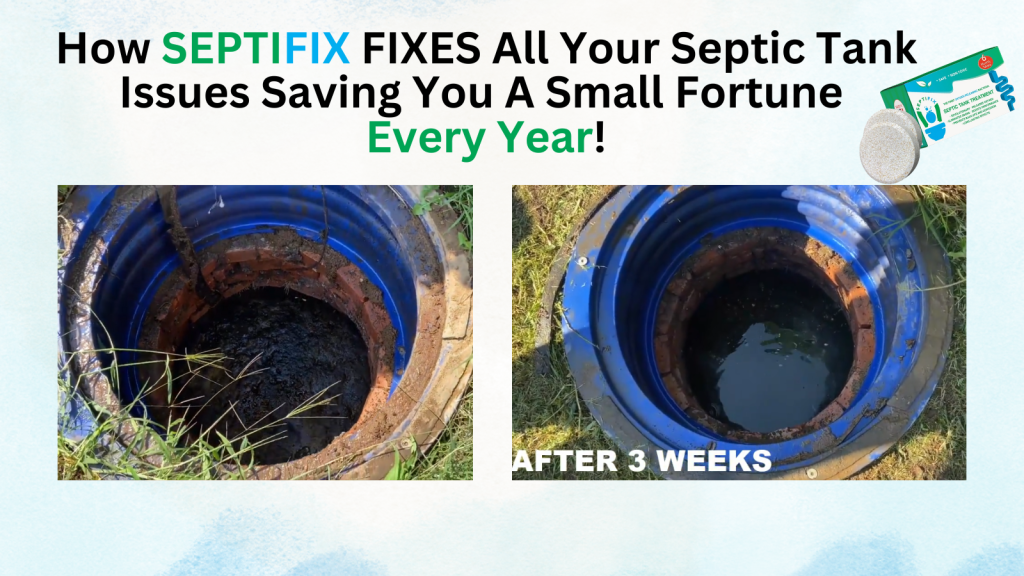If you’re planning to build or renovate a home in a rural part of the state, understanding Mississippi septic tank requirements is crucial. The state has specific regulations that govern the design, placement, installation, and maintenance of onsite wastewater systems (also called individual onsite systems or residential sewage systems). Failing to comply can lead to costly penalties or system failures that pose serious health and environmental risks.
This guide breaks down the key requirements and steps involved in complying with Mississippi’s onsite wastewater rules.
Table of Contents
- Who Regulates Septic Systems in Mississippi?
- Getting Started: Permitting and Site Evaluation
- System Design and Installation Guidelines
- Licensing Requirements for Installers and Inspectors
- Regular Maintenance and Pumping Requirements
- Fines and Penalties for Non-Compliance
- Contact Information
- Septifix Works Every Time
- Septic Permit Links by State
Who Regulates Septic Systems in Mississippi?
In Mississippi, septic systems are regulated by the Mississippi State Department of Health (MSDH) through the Division of Onsite Wastewater. Local county health departments also play a role in permitting and inspection.
Before any installation or major repair, you must get approval from MSDH. That starts with submitting an application and includes an evaluation of your property’s soil and site conditions.
Getting Started: Permitting and Site Evaluation
Step 1: Submit an Application for Wastewater Disposal
Before installing a septic tank, homeowners must submit an Application for Wastewater Disposal to the local MSDH office. This form collects basic information about the property, intended use, and building layout.
Important: You must submit this application before any construction or land-clearing takes place.
Step 2: Soil and Site Evaluation
MSDH will assign or approve a certified evaluator to inspect your property. This soil evaluation determines the soil’s suitability to absorb wastewater. A percolation test or detailed soil morphology report may be used.
What they’re checking for:
- Soil texture and drainage capacity
- Distance from water wells and property lines
- Topography and floodplain risks
If your land fails the test, you may need an alternative septic system like an aerobic treatment unit (ATU) or drip dispersal system.
System Design and Installation Guidelines
Minimum Requirements for Conventional Systems
If your soil supports a conventional gravity-fed system, here’s what the state requires:
- Minimum tank size: 1000 gallons for up to 3 bedrooms
- Drain field: Sized according to the percolation rate and daily usage
- Setbacks:
- 50 feet from wells
- 10 feet from property lines
- 5 feet from buildings
All septic tanks must be watertight and made from approved materials such as concrete, fiberglass, or polyethylene.
When to Use an Advanced Treatment System
In clay soils or flood-prone areas, MSDH may require an alternative setup. These advanced systems must be designed by a Mississippi-licensed professional engineer and installed by a certified installer.
Examples of advanced systems:
- Aerobic systems with chlorination
- Low-pressure dosing systems
- Mound or drip systems
These systems often come with ongoing inspection and maintenance contracts to ensure proper function.
Licensing Requirements for Installers and Inspectors
Anyone installing or maintaining septic systems in Mississippi must hold valid MSDH certification. That includes:
- Certified installers
- Designers (typically engineers)
- Pumping service providers
Homeowners are not allowed to install their own septic system unless they are certified and follow all MSDH procedures.
Pro Tip: Always ask for credentials before hiring a contractor to avoid fines or non-compliance.
Regular Maintenance and Pumping Requirements
Pumping Frequency
Even properly installed systems need routine maintenance. MSDH recommends that tanks be pumped every 3–5 years, depending on household size and usage.
Signs your tank needs pumping:
- Slow-draining sinks and toilets
- Gurgling noises in pipes
- Standing water near the drain field
- Sewage odors indoors or outdoors
Neglecting maintenance can result in system backup, environmental contamination, or expensive repairs.
What Records to Keep
Always keep a file with:
- Permit and application records
- Soil evaluation results
- Septic system design specs
- Pumping and service logs
This documentation is especially helpful when selling your home or dealing with insurance claims.
Fines and Penalties for Non-Compliance
Violating Mississippi’s septic regulations can lead to:
- Stop-work orders
- Civil penalties (up to $10,000 per violation)
- Mandatory system removal or replacement
If you’re unsure whether your system is compliant, contact your local MSDH office for an inspection or consultation.
Contact Information
For more help navigating Mississippi septic tank requirements, check out the following resources:
- Mississippi State Department of Health – Onsite Wastewater
https://msdh.ms.gov - MSDH Certified Installers Directory
Contact your local county office or download the latest list from MSDH - Soil Testing for Septic Systems in Mississippi
Learn more about soil evaluation guidelines - EPA SepticSmart Homeowner Resources
https://www.epa.gov/septic
Wastewater Call Center: 1-855-220-0192
Location
Mississippi State Department of Health
Division of On-Site Wastewater
570 East Woodrow Wilson Drive
Jackson, MS 39216
Office: 601‑576‑7150
Fax: 601‑576‑7120
Mailing address
Mississippi State Department of Health
Division of On-Site Wastewater
P.O. Box 1700
Jackson, MS 39215-1700
Conclusion: Stay Compliant and Protect Your Property
Understanding and following Mississippi septic tank requirements is key to protecting your health, your home, and the environment. From proper permitting and site evaluations to professional installation and regular maintenance, staying on top of the rules will save you headaches—and money—in the long run.
If you’re planning a new build or replacing an old septic system, contact MSDH and a certified septic professional to get started the right way.
Septifix Works Every Time










